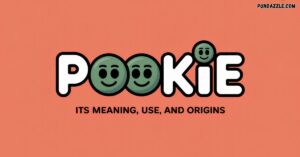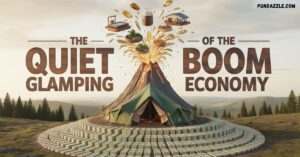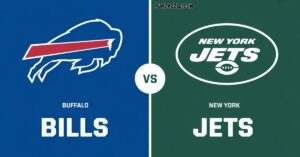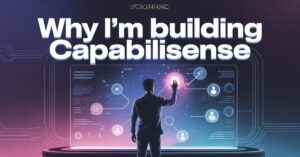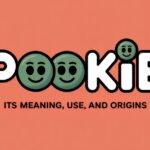Traditional content doesn’t cut it anymore. You craft what you think is brilliant a comprehensive guide, a stellar blog post, maybe even a video tutorial.
Then crickets. Maybe some traffic trickles in, but engagement flatters before it flourishes.
Here’s the brutal truth: your audience isn’t monolithic. They don’t all think alike, search alike, or consume content the same way.
The fragmentation problem isn’t coming it’s already here. Different segments of your target market need different entry points into the same conversation.
Attention economics in 2025 operates on a harsh principle: you get seconds, not minutes, to prove relevance.
When you present only one angle on a topic, you’re gambling that it resonates with whoever stumbles upon it.
Miss that mark? They’re gone. The algorithmic penalty compounds this. Search engines now recognize when you’ve covered a topic superficially from a single vantage point. They reward depth, variety, and comprehensive perspective coverage.
The Your Topics | Multiple Stories framework solves this. Instead of creating one piece and hoping it lands, you architect multiple narratives around the same core topic each designed for specific audience segments with distinct needs, questions, and emotional states.
Understanding Your Topics | Multiple Stories: Framework Essentials
What This Strategy Actually Means
Let’s strip away the marketing jargon. Multi-narrative content strategy means taking one valuable topic and telling multiple distinct stories about it. Not reformatting the same content.
Not slight tweaks. Genuinely different narratives that approach the subject from varied angles.
Think of it like examining a diamond. Each facet reveals something different about the gem’s nature. Same stone, completely different views. That’s multi-perspective storytelling in action.
The core principle centers on recognition: one story can’t capture everyone. Your topic might interest a beginner seeking fundamentals, an expert hunting advanced insights, a skeptic needing proof, and an emotional buyer wanting connection. Each needs their own narrative journey.
The Psychology Behind Multi-Angle Storytelling
Narrative psychology teaches us something fascinating: people process information through stories, but not all stories work for all people.
Cognitive diversity in your audience means learning style preferences vary wildly.
Some folks need visual demonstrations. Others want analytical breakdowns. Many crave personal narratives they can relate to.
Emotional resonance hits differently depending on where someone sits psychologically.
A stressed parent juggling work and kids connects with different content than a ambitious twentysomething climbing the corporate ladder even when both need solutions to the same underlying problem.
Human-centered content acknowledges this reality. Building trust requires meeting people where they are, speaking their language, addressing their specific concerns.
When you create story-driven content marketing from multiple angles, you’re not repeating yourself. You’re providing genuine value through varied lenses.
Real Business Impact: Multiple Stories in Action
Case Study: B2B SaaS Breaks Through Noise
A cybersecurity company struggled with API security content. Their comprehensive guide sat dormant despite solid technical quality. They implemented Your Topics | Multiple Stories with seven distinct angles:
- The Developer’s Technical Deep-Dive (detailed implementation guide)
- The CTO’s Risk Assessment (business impact focus)
- The Compliance Officer’s Checklist (regulatory angle)
- The Startup Founder’s Quickstart (speed-to-implementation)
- The Enterprise Architect’s Integration Story (scalability perspective)
- The Security Incident Survivor’s Warning (emotional narrative)
- The Consultant’s Best Practices (industry standards)
Within 90 days, their topical authority skyrocketed. Organic traffic increased 340%.
More importantly, lead quality improved different stories attracted different decision-makers, creating fuller buying committee engagement.
Their conversion rate jumped 67% because prospects arrived pre-educated from the angle most relevant to their role.
Case Study: E-commerce Brand Captures Market Share
An ethical fashion retailer needed sustainable fashion content that converted. Their multi-story content engine included:
- The Budget-Conscious Shopper’s Guide (affordability focus)
- The Environmental Activist’s Impact Report (data-driven sustainability)
- The Fashion Lover’s Style Transformation (aesthetics-first)
- The Parent’s Safe Choices (health and safety angle)
- The Career Professional’s Wardrobe Investment (longevity and value)
Cross-platform storytelling distribution placed each narrative where that persona lived. Instagram got the style story.
LinkedIn featured the investment angle. Pinterest housed the budget guide.
Results? Customer acquisition cost dropped 43%. Average order value increased 58% because different stories addressed different objections.
The persona-story mapping created clear pathways from awareness to purchase based on individual motivations.
2025 Content Landscape: Why This Strategy Dominates Now
Platform Behavior Changes You Can’t Ignore
Search algorithms evolved dramatically. Google’s Helpful Content System doesn’t just evaluate individual pages anymore. It assesses your comprehensive topic coverage.
The semantic SEO revolution means engines understand concepts, not just keywords. They recognize when you’ve explored a subject from multiple meaningful angles versus surface-level content multiplication.
Entity-based optimization rewards demonstrating subject mastery through varied perspectives.
When you create narrative layering around a topic, you signal genuine expertise. Algorithms interpret this as authoritative content worth promoting.
Cross-platform discovery patterns shifted too. Users don’t find all their information in one place.
They might discover you on TikTok, research you on LinkedIn, validate through your blog, then convert via email.
Your strategic interlinking architecture needs to support these multi-touchpoint journeys.
Audience Expectation Evolution
Modern consumers validate information through multiple sources. They’re sophisticated. Skeptical.
The authenticity algorithm in their heads constantly evaluates whether you understand their specific situation.
Multi-format content strategy meets this need organically. When someone watches your YouTube video, reads your blog post, and listens to your podcast episode all covering the same topic from different angles trust compounds.
They think: “These people really understand this subject.“
The “choose your own journey” consumption model means audiences want autonomy. They don’t want force-fed linear content paths.
Story-driven engagement lets them self-select the narrative that resonates most.
Technical Infrastructure Advantages
AI-assisted storytelling tools matured significantly. You can now efficiently create content variations without sacrificing quality.
But and this matters these tools work best when you provide distinct strategic direction for each narrative angle.
Distribution automation reached new heights. Cross-platform content distribution systems can intelligently place the right story on the right platform for the right audience segment.
Analytics precision lets you track story-based SEO performance at granular levels.
Voice search content optimization demands conversational, question-focused content from multiple perspectives.
People ask questions differently based on their familiarity level. Your voice-first content strategy needs beginner, intermediate, and expert narratives.
Building Your Multiple Stories System: The Eight-Phase Method
Phase 1: Strategic Topic Identification
Not every topic deserves the multi-narrative framework. Choose subjects where:
- Audience segments have genuinely different needs
- Multiple legitimate perspectives exist
- Business impact justifies production investment
- Search demand supports comprehensive coverage
Create a story complexity matrix:
Topic CharacteristicHigh ComplexityMedium ComplexityLow ComplexityAudience Diversity5+ distinct personas3-4 personas1-2 personasPerspective Variety6+ meaningful angles3-5 angles1-2 anglesBusiness ValueCore offeringImportant featureNice-to-haveSearch OpportunityHigh volume + low saturationModerate volumeLow volume
Topics scoring “High” in 3+ categories become prime candidates.
Phase 2: Audience Persona Story Matching
Persona-based content strategy requires moving beyond demographic sketches. You need psychographic depth what keeps them awake at night?
What questions do they ask? What emotional state accompanies their search?
Empathy-driven marketing starts with genuine understanding. Interview actual customers. Analyze support tickets.
Review social media comments. Extract the language they use, the concerns they express, the objections they raise.
Map each persona to specific story angles:
- The Skeptic needs proof, data, third-party validation
- The Novice wants simplified explanations, step-by-step guidance
- The Expert seeks advanced insights, nuanced discussion
- The Emotional Buyer craves personal connection, relatable narratives
- The Analyst demands logic, frameworks, systematic approaches
Phase 3: Format Selection Strategy
Multi-format production workflow doesn’t mean creating everything everywhere. Strategic format alignment matters.
Different formats serve different functions:
Written content (blogs, articles, guides):
- Deep SEO value
- Reference material
- Detailed explanations
- Evergreen authority building
Video content (YouTube, TikTok, Reels):
- Visual demonstration
- Personality connection
- Algorithm preference on visual platforms
- Shareability potential
Audio content (podcasts, voice notes):
- Commute-friendly consumption
- Intimate, conversational feel
- Authority building through voice
- Long-form exploration
Visual content (infographics, carousels, diagrams):
- Quick comprehension
- Social platform optimization
- Data visualization
- Simplification of complex topics
Match format to both audience preference and content strength.
Phase 4: Narrative Architecture Development
Brand voice consistency across varied narratives challenges many teams. Here’s the key: your voice stays consistent, but your angle and emphasis shift.
Think of it like a person speaking to different audiences. You’d explain quantum physics differently to a child versus a physics professor, but your personality remains intact. That’s authentic brand voice preservation.
Extract your central message the core truth you’re communicating. Then build distinct narrative pathways that arrive at that truth from different directions.
The hub-and-spoke content model works brilliantly here. Your central topic acts as the hub. Each story angle becomes a spoke leading inward.
Avoid contradiction through careful planning. Document:
- Core facts that remain constant
- Perspective-dependent interpretations
- Audience-specific emphasis areas
- Tone variations that stay on-brand
Phase 5: Content Production System
Story-driven content marketing at scale requires systematization. Batch creation workflows save massive time. When you’re in “writer mode,” create multiple story drafts.
When you’re in “editor mode,” refine them all. When you’re in “designer mode,” handle all visuals.
Quality control checkpoints prevent dilution:
- Message alignment check
- Brand voice consistency review
- Factual accuracy verification
- Audience-appropriate complexity assessment
- SEO optimization validation
Freelancer briefing templates should include:
- Target persona details
- Specific narrative angle
- Required perspective/tone
- Core message to communicate
- Format specifications
- Semantic interlinking requirements
Phase 6: Internal Linking Strategy
Strategic interlinking architecture transforms isolated content into a cohesive knowledge ecosystem. Each story should contextually link to related angles when genuinely helpful.
The hub-and-spoke SEO model implementation looks like this:
- Core hub page: Comprehensive topic overview linking to all story angles
- Story pages: Individual narratives linking back to hub and to complementary stories
- Supporting content: Deep-dive pieces linked from relevant stories
- Conversion pages: Service/product pages receiving contextual links from stories
Cross-story linking shouldn’t feel forced. Link when:
- The connection provides genuine reader value
- The destination addresses a natural next question
- The perspective shift offers valuable contrast
- The format change enhances understanding
Phase 7: Multi-Channel Distribution Planning
Content distribution strategy recognizes platform-native requirements. What works on LinkedIn flops on TikTok. What resonates on Instagram feels out of place on a corporate blog.
Platform-specific optimization requirements:
LinkedIn: Professional tone, career/business angle, thought leadership positioning Instagram: Visual-first, behind-the-scenes feel, lifestyle integration TikTok:
Entertaining education, trend participation, authentic personality YouTube: Structured content, visual demonstration, searchable evergreen value Blog:
Comprehensive depth, SEO optimization, reference quality Email: Personal connection, exclusive insights, relationship building
Timing and frequency matter less than consistency. Better to publish one quality story weekly than flood channels with rushed content.
Phase 8: Performance Monitoring and Iteration
Content optimization metrics reveal what’s working. Track story-level performance:
- Traffic volume by story angle
- Engagement depth (time, scroll, interactions)
- Conversion rates by narrative perspective
- Cross-story navigation patterns
- Audience segment alignment
Identify underperformers early. Sometimes a story angle just doesn’t resonate. Rather than abandoning it, diagnose why. Wrong platform? Weak execution? Misaligned persona assumptions? Fix what’s broken or reallocate resources to winning narratives.
Advanced Execution Techniques
The Perspective Wheel Method
The perspective wheel brainstorming method generates diverse story angles systematically. Draw a circle. Place your topic in the center. Around the perimeter, position different stakeholder perspectives:
- The Beginner: What do they need to understand first?
- The Expert: What nuances matter most?
- The Skeptic: What objections must you address?
- The Success Story: Who achieved results and how?
- The Failure Story: What mistakes should people avoid?
- The Industry Observer: What trends or shifts are relevant?
- The Contrarian: What conventional wisdom needs challenging?
- The Practical Implementer: What tactical steps matter?
Each perspective becomes a potential story angle.
Multi-Format Production Efficiency
Multi-format content production efficiency comes from modular thinking. Create content modules that work across formats:
- Core concept explanation: Works as blog section, video segment, infographic panel
- Supporting statistics: Fits in written content, video overlays, social graphics
- Personal anecdotes: Adapts to video storytelling, podcast discussion, written narrative
- Actionable tips: Becomes checklist, video tutorial steps, carousel slides
This isn’t repurposing it’s intelligent asset reuse that maintains format-native quality.
Technology Stack for Scalable Implementation
Planning and Organization Tools
Content strategy 2025 demands robust systems:
Notion: Flexible database for persona profiles, story angle tracking, content calendars Airtable: Relational database perfect for linking personas to stories to formats Trello: Visual workflow management for production pipeline tracking
Production and Creation Tools
Canva: Design templates for maintaining visual consistency across stories Descript: Video and audio editing with transcript-based workflow Loom: Quick video creation for authentic, personal story delivery
Distribution and Amplification Tools
Buffer: Social scheduling with platform-specific optimization ConvertKit: Email marketing with subscriber segmentation by story interest WordPress: Blog platform with strong SEO and internal linking capabilities
Analytics and Intelligence Tools
Google Analytics 4: Traffic and engagement tracking with event-based modeling Hotjar: User behavior visualization showing cross-story navigation SEMrush: Topical authority building tracking and competitive gap analysis
Measuring What Matters: Multiple Stories KPIs
Awareness Stage Metrics
MetricWhat It RevealsTarget BenchmarkTopic Cluster VisibilityHow many stories rank in top 2060%+ of stories rankingCross-Story TrafficUsers visiting multiple stories25%+ multi-page sessionsNew Audience DiscoveryFirst-time visitors per story angleGrowing month-over-monthShare of Voice ExpansionYour presence vs. competitors on topicIncreasing percentage
Consideration Stage Metrics
Behavioral content strategy measurement focuses on engagement depth:
- Story-to-story navigation rates
- Total time investment across multiple pieces (session duration)
- Return visitor patterns (coming back for different angles)
- Lead magnet downloads by story entry point
Conversion Stage Metrics
Story-driven brand positioning impact shows in:
- First-touch story attribution (which narrative introduced them)
- Multi-touch journey mapping (story sequence before conversion)
- Customer acquisition cost by angle (efficiency per perspective)
- Revenue per story investment (ROI by narrative)
Overcoming Implementation Challenges
Resource Constraint Solutions
Small teams fear Your Topics | Multiple Stories seems overwhelming. Start with minimum viable story count: three distinct angles per topic.
Choose perspectives with clearest audience differentiation.
Outsourcing vs. in-house decisions depend on:
- In-house: Brand voice-critical content, strategic messaging, core positioning
- Outsource: Format adaptation, design work, transcription, initial drafts
Template development upfront saves exponential time later. Create:
- Story brief templates
- Format specifications
- Style guide documentation
- Quality checklists
Quality Consistency Methods
Human-centered storytelling requires maintaining quality across volume. Documentation becomes crucial:
Brand voice documentation should include:
- Tone descriptors with examples
- Language to use vs. avoid
- Humor/formality boundaries
- Technical complexity guidelines
Editorial guidelines establish:
- Story structure expectations
- Source citation requirements
- Fact-checking protocols
- Revision processes
Avoiding Content Cannibalization
Content marketing evolution brings sophistication to keyword strategy. Different stories target different search intents:
- Informational: “What is [topic]” (beginner angle)
- Commercial: “Best [topic] solutions” (comparison angle)
- Transactional: “How to implement [topic]” (action-focused angle)
- Navigational: “[Brand] approach to [topic]” (thought leadership angle)
Monitor internal competition through rank tracking. If two stories compete for identical keywords, differentiate them further or consolidate.
Future-Proofing Your Multiple Stories Strategy
AI Integration Opportunities
AI-powered content creation assists without replacing human creativity:
- Ideation assistance: Generate story angle variations
- Draft creation: Produce first-pass content for editing
- Personalization: Adapt narratives for micro-segments
- Quality maintenance: Check consistency across stories
Authentic storytelling framework still requires human insight. AI can’t replicate genuine expertise or emotional intelligence.
Platform Evolution Adaptation
Content marketing trends 2025 point toward:
- Increasing video dominance
- Voice and audio growth
- Interactive content preference
- AI-assisted personalization
Your multi-narrative content strategy adapts by maintaining format flexibility. Don’t build your entire system around one platform. The underlying story angles remain valuable regardless of distribution channel changes.
Your 30-Day Implementation Roadmap
Week 1: Foundation Building
- Select one valuable topic with clear audience diversity
- Document 3-5 distinct persona profiles with psychographic depth
- Brainstorm 5-7 story angles using perspective wheel method
- Choose 2-3 primary formats based on resources
Week 2: Content Development
- Create first story batch (3-5 narratives)
- Develop supporting visual assets
- Design narrative web architecture with linking strategy
- Quality review for message consistency and brand voice
Week 3: Distribution Launch
- Publish stories across chosen platforms
- Execute platform-specific promotion
- Initiate community engagement
- Activate tracking and monitoring systems
Week 4: Analysis and Optimization
- Collect performance data across all stories
- Identify winning angles and underperformers
- Document audience response patterns
- Plan next topic cycle with learnings applied
Critical Success Factors
Human-centered marketing approach success requires:
Commitment to comprehensive coverage: Half-hearted execution defeats the purpose. Commit fully or don’t start.
Patience for compound results: Narrative-driven brand growth accelerates over time. Month one looks modest. Month six shows exponential gains.
Willingness to experiment: Not every angle works. Learn quickly and adjust without abandoning the core strategy.
Team alignment: Everyone must understand why you’re creating multiple stories, not just executing tasks.
The Competitive Advantage
Most brands still create one-dimensional content. They publish their take on a topic and move on. This leaves massive gaps for you to fill.
Your Topics | Multiple Stories isn’t just better content strategy it’s a defensible competitive moat.
Once you establish topical authority through comprehensive multi-angle coverage, competitors face an enormous catch-up challenge.
You’re not just creating content. You’re building an interconnected knowledge ecosystem that serves diverse audience needs, captures search visibility across varied intent types, and compounds engagement through cross-narrative amplification.
The question isn’t whether this approach works. Evidence overwhelmingly confirms it does. The question is: will you implement it before your competitors do?
Your Topics | Multiple Stories represents the future of content strategy 2025 where understanding human diversity drives marketing effectiveness, where emotional storytelling meets analytical rigor, and where brands win by serving everyone, not just some people.
Start with one topic. Create three stories. Watch what happens. Then scale systematically. Your audience in all their glorious diversity is waiting for content that actually speaks to them.
Read more knowledgeable blogs on Pun Dazzle

Philipp Engel is a passionate writer and pun lover dedicated to spreading laughter and joy through words. As the creator and author of the website Philipp Engel, he delivers a delightful mix of puns, jokes, and playful humor that entertains readers of all ages. With a sharp wit and a deep love for language, Philipp aims to brighten every visitor’s day with clever wordplay and a smile, making humor a universal language that connects people everywhere.

